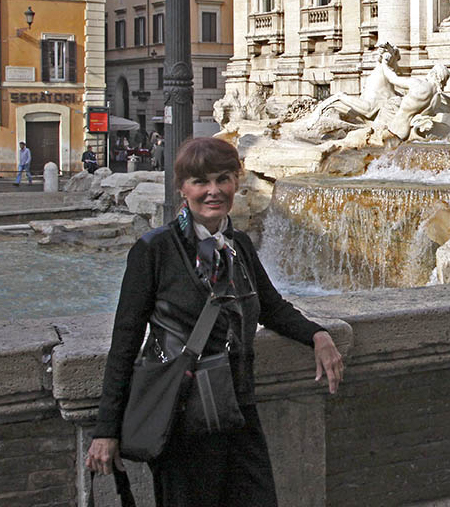 Carolyn Hammett can put in a hard contact lens in the middle of a sandstorm in the desert at midnight. She can change trains in Italy in a matter of minutes; she can photograph the world’s treasures without missing a shot; and she can travel for six weeks with one small suitcase. And she can do it all with one good eye.
Carolyn Hammett can put in a hard contact lens in the middle of a sandstorm in the desert at midnight. She can change trains in Italy in a matter of minutes; she can photograph the world’s treasures without missing a shot; and she can travel for six weeks with one small suitcase. And she can do it all with one good eye.
Now in her 70’s, Hammett was diagnosed with keratoconus (KC) in the 1960s. I didn’t know what keratoconus was, and I didn’t care, she says. Until very recently, every time I hit the wall, some new lens development saved me. She has worn every iteration of contact lens, including hard lenses and gas-permeable lenses. She has been piggybacking (wearing a hard lens over a soft lens) successfully for more than two decades.
Hammett taught art history at University of Texas (UT) at Tyler. I rationed my lens-wearing for class and driving time, she says. At UT, she was also the slide curator for the art department, which turned out to be an ideal job for someone with low vision. Even with my crummy eyes, it worked fine, because slide work is really close-up on a light table with a loupe magnifier, she says. And that morphed into my interest in photography. As her love of photography grew and joined her passion for travel, there was no stopping her.
| Leader of the Pack |
|---|
|
In Carolyn Hammett’s suitcase for a two-week trip: |
|
|
|
|
|
|
|
|
|
|
|
|
A fifth-generation Texan, Hammett and her husband, Malcolm, have traveled extensively around the world. Italy and Paris are favorites, and they visit often. Her website displays thousands of photos from their trips abroad. She especially loves architectural photography and feels deep gratitude for having been able to memorialize museums and sites where photography is no longer permitted. Thank goodness for auto-focus, she says with a laugh. Any kind of auto-focus is better than my eyes. My brain can tune out the bad eye; I’ve learned to see and do everything with one eye. I usually travel with two large cameras and lenses. I like really good cameras I don’t even know how to take iPhone pictures!
Recent cataract surgery in her good eye went very well, giving her enough hope to plan the same surgery on her other eye, in which she currently has no usable vision.
I know how very lucky I am to have been able to travel so much, and to so many places, Hammett says. I don’t think I’ve ever considered my KC a big problem in traveling or photography, as it has been a part of me for most of my life. Now and then, it was inconvenient, but I just feel fortunate that I live in a time when there are ways to deal with it!

